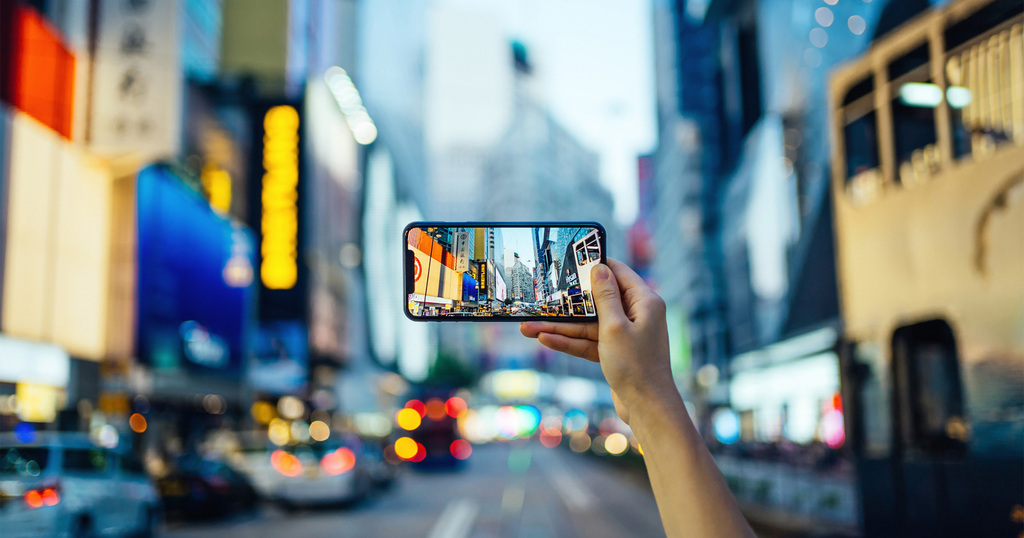Note: This website was automatically translated, so some terms or nuances may not be completely accurate.
The next-generation OOH (out-of-home advertising) possibilities expanded by 3D advertising. What is the essential approach to capturing users' hearts?
In recent years, "3D advertising" has become visible in Japan. The powerful images that seem to leap out from street displays make a strong impact on viewers. You may have seen them featured on TV or social media.
Outdoor billboards, transit ads, street displays—these are all examples of "OOH" (Out Of Home) advertising, the simplest form of advertising that has existed for a long time. 3D advertising is now writing a new chapter in the history of OOH. But what kind of impact will it have on the advertising world going forward?This time, under the theme "Can 3D Advertising Expand OOH's Potential and Offer Clues for Returning to an Essential Approach to Users?", we will explore the value and future possibilities of 3D advertising after examining the history of OOH.
OOH: Capturing People's Interest for Centuries
Do you know what the "world's oldest advertisement" was? One theory suggests it was a cosmetic advertisement displayed on papyrus in Egypt approximately 4,500 years ago. Going even further back, around 40,000 years ago, there is also a theory that information was communicated through wall paintings in Indonesia.Displaying information and messages in places where people gather. This form of OOH is essentially the "oldest advertising format," used by humanity since ancient times. Particularly in densely populated urban areas, its ability to efficiently deliver messages to large numbers of people has ensured its long-term use, evolving into various forms over time.
The definition of OOH is broad; any advertising medium consumers encounter outside their homes falls under this category. Typical examples include street signs and posters, hanging advertisements inside trains, and increasingly, digital signage. You've likely also noticed videos playing inside taxis and elevators more frequently.
Moreover, OOH is not limited to flat expressions like paper or displays. It includes three-dimensional panels, "peel-off ads" where posters feature attached novelty items or product samples that consumers can freely remove and take home, and even interactive ads. These interactive ads, enabled by sensing technology, recognize the face of a person standing in front of a digital sign and display ads tailored to their age and gender.Alongside technological innovation and evolving promotional methods, OOH has embraced diverse forms of expression.
As a new form of OOH, "3D advertising" generates buzz while driving its own momentum.

In this way, OOH has freely adapted its formats and expressions alongside technological innovation, aligning with the trends of the times to reach a wide audience. Among these, 3D advertising has recently gained significant attention as a new form of OOH. Let's explore the usefulness of 3D advertising and the future potential of OOH. First, here are representative examples of 3D ads that have generated buzz.
Case 1: The "Giant Cat" Ad in front of Shinjuku East Exit Station
In July 2021, a large street-level vision appeared on the rooftop of a building in front of JR Shinjuku Station's East Exit. This uniquely shaped vision, created by curving high-definition LED displays, can broadcast 4K-equivalent, vivid 3D content. The "image of a giant cat leaping out," released simultaneously with its installation, captured people's attention. It became so popular that crowds gathered at the spot, waiting to take photos until the next broadcast.Measures to control viewer numbers became necessary, including increasing the broadcast frequency beyond the original plan and announcing the times in advance on social media.
Case 2: Sports Brand's "Jumping Sneakers" Ad
In March 2022, the same Shinjuku East Exit station vision displayed an advertisement for a "jumping sneaker" by a major sports manufacturer, commemorating the 35th anniversary of its sneaker brand. This also became a major topic, spreading rapidly on social media and drawing reactions even from overseas.
These two cases reveal that the powerful expression of 3D advertising has a strong effect of drawing people in. Despite being advertisements, they themselves hold the potential to generate "customer attraction." Furthermore, such impactful ads also stir up the desire to "share with others."During the airing of both ads, many people filmed the displays with their smartphones, sharing them with family and friends or posting them on social media, further spreading the buzz. In other words, 3D ads not only capture the attention of many people on the spot but can also spread the buzz organically, creating a self-sustaining momentum.
Of course, not every 3D advertisement will achieve this effect. To make the buzz self-sustaining, it's crucial to consider whether it's "easy to spread on social media." The popularity of the "giant cat" ad likely stemmed from two key factors:
- 1. Short 15-second broadcast length, making filming and uploading to social media easy
- The cat's movements changed depending on the time of day and season, encouraging viewers to film it multiple times
This ability to spark buzz and sustain organic spread starting from "surprise and wonder" is a strength of 3D advertising. However, this approach isn't exclusive to 3D ads.Fundamentally, OOH has always been placed where it catches the eyes of many people. It spreads as viewers share the information and their impressions with those around them. Even in today's era of dramatically advanced technology, this essence remains unchanged. In fact, considering the characteristics of 3D advertising might lead us to revisit the core purpose of OOH: "moving people's hearts to propagate the message."
Learning from 3D advertising to create ads that instantly capture people's hearts

3D advertising instantly captures people's hearts and sparks organic buzz. With this nature in mind, let's consider the future of advertising.
While some ads inspire awe and wonder, unfortunately, others evoke negative perceptions. For instance, certain online ads have drawn such criticism. According to the Japan Interactive Advertising Association's "2020 User Awareness Survey on Internet Advertising," 54% of respondents felt annoyed by online ads due to "how they are displayed (e.g., the close button is too small, ads appear at the bottom of the screen and follow you as you scroll)."and 41.8% feel aversion due to the content itself (excessively exaggerated claims, unpleasant creative elements, etc.). Furthermore, many express dissatisfaction with targeting, feeling the ads displayed are "uninteresting" or "not relevant to them."
Amidst these opinions, many companies are grappling with how to promote their products and services without provoking aversion. They are devising various approaches to enhance advertising effectiveness, such as: "structuring ads to capture interest within the first few seconds," "incorporating storytelling to make viewers want to see more," and "utilizing celebrities or influencers favored by the target audience."
A key point is "ad delivery segmentation" using precise targeting. While traditional OOH like street signs and station posters can reach a broad, unspecified audience, it's difficult to narrow down based on specific conditions to appeal only to "the people you really want to reach," as the target audience may not necessarily pass through those locations. Furthermore, it was fundamentally impossible to display appropriate information based on conditions like weather or time of day.However, digital signage utilizing various sensing technologies in OOH now enables the display of ads tailored to the people present or the situation at that moment, considering factors like age, gender, and environmental changes such as climate. For 3D advertising too, if appropriate targeting can be applied, viewers are more likely to perceive the information as "personalized for them," leading to a more favorable reception. For more on weather-based ad targeting, see this article.
Furthermore, 3D advertising techniques may also be adopted in virtual spaces, including the "metaverse." As mentioned in this article, if the metaverse becomes more widespread in the future, it is expected to be used more routinely across diverse fields like daily life and business. It's not hard to imagine advertising within the metaverse becoming commonplace. In virtual spaces, freed from physical constraints like size and shape, more liberated advertising expressions are anticipated.Dynamic expressions where objects seem to leap off the screen or move around freely, as well as immersive expressions that draw users in, will likely become possible. If this happens, the strengths of 3D advertising—such as its ability to "attract people" and "spread to those around them"—may be further developed.
3D advertising moves people's hearts and generates buzz on its own. Examining its characteristics reveals a fundamental concept at its core: delivering fresh surprise to viewers—a principle that could be considered the very essence of advertising. Pursuing this core question of "how to move people's hearts" while effectively combining it with cutting-edge technologies like sensing technology and the metaverse. This approach could be one effective way to expand the possibilities of advertising going forward.
The information published at this time is as follows.
Was this article helpful?